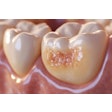
How important are your personal interactions with patients?
According to a new study from the Dental Practice-Based Research Network (DPBRN) Collaborative Group, in restorative dentistry, personal interactions have a significant impact on a patient's perception of a dentist's skill and the quality of care he or she is delivering (Journal of the American Dental Association, September 2012, Vol. 143:9, pp. 1002-1010).
"A patient's judgments of a dentist's skills and quality of care are based on personal interactions with the dentist, the level of comfort the patient perceives while receiving care, and any experience of post-treatment sensitivity in the treated tooth," wrote the study authors, a group led by researchers from the University of Florida College of Dentistry.
Dentists in small group practices, the placement of new restorations, repairs or replacement made to defective restorations, and restored teeth that were not molars were also important aspects of patient satisfaction, they found.
“After several levels of analysis of that study it, appears that there was a significant disconnect between the provider and the patient regarding adequate information (informed consent) about the procedures before the treatment,” Patrick J. Foy, DDS, a Minneapolis private practitioner who worked on the study, wrote in an email to DrBicuspid.com. “It should be noted that even when patients and doctors knew that they are being surveyed about an ongoing dental appointment, they still inadequately failed (about 60%) to satisfy the patients need for more information about the procedures anticipated that day.”
While previous studies have examined the relationship between patient satisfaction and homogenous sets of procedures -- particularly orthodontics and prosthetics -- there is little data about satisfaction as it pertains to restoratives, the researchers noted. To learn more, they reached out to of DPBRN practitioner-investigators through mailings. From the respondents, they requested information about their demographic, practice, and personal characteristics, and had them complete questionnaires about caries treatment and diagnosis.
"The overall project involved collection of clinical data regarding the restorative treatment provided for each patient, responses to a survey assessing the patient's satisfaction with the dental visit, and a longitudinal follow-up of the restorations," the researchers explained. The patients recruited by 197 dentists or practices were seen consecutively and had defective permanent-tooth restorations repaired or replaced by the responding dentist.
After treatment, the patient was given a survey form to complete the following day and mail to a DPBRN regional coordinator. As an incentive, a $10 gift card sent was sent to patients after their survey was received.
To craft the survey, a member of the survey team spoke with 15 patients who had recently been treated with restorative dentistry and 16 dentists who work with restorations. In particular, they sought to learn what was important to these patients about restorative care so that those characteristics could be used to ascertain the makeup of satisfying restorative care. The data were used to create a 40-item questionnaire, vetted by restorative dentistry experts, and broken down into common domains:
- Relationship with the dentist
- The dentist's technical ability
- Comfort or the degree to which the care was pain-free
- Restorative material used
- Communication about treatment
- Dental office environment
- Interpersonal communication
- Wait time between the appointment time and the time the treatment actually began
- Cost of treatment
The questionnaires distributed to patients and practitioners were different in that the practitioners were asked for their opinions on how they thought they were perceived by the patient for each item. A trial run of the questionnaire was completed by 19 dentists and 39 patients who had received restorative care within the last year in order to pinpoint items that were of particular importance to achieving patient satisfaction by both parties.
The researchers pared down the list to 20 questions by eliminating highly rated questions that fell within the same domains. The final version included "each of the aforementioned nine dimensions with test-retest coeffecients ranging from 0.95 for 'How my dentist limited pain during the procedure' to 0.83 for 'How the filling looks,' " the researchers wrote.
Thousands of respondents
The researchers received forms for 7,286 patients enrolled in the study sent in by DPBRN practitioner-investigators. And they received 5,879 surveys from those patients, or 81%. And of them, 92% (n = 5,405) filled out the surveys completely and were deemed usable data.
The data were broken down into three factors, the first of which was "interpersonal relationship-comfort." In this dataset, the researchers found that a long time frame between dental school graduation and the present and older age of the practitioner had positive associations with satisfaction ratings (p < 0 .01). Small group practice dentists faired better than those in large group practices or public health practices (both at p < 0.01). Additionally, female patients reported greater satisfaction than males (p < 0.1). Higher satisfaction ratings were given for the placement of original restorations (p < 0.04), and repairing a defective restoration was rated more highly than the replacement of one (p < 0.02).
The second factor was "material choice-value." The researchers noted that "the percentage of time that the dentist typically spent each day performing nonimplant restorative procedures (p < 0.01) and patient's age (p < 0.01) were positively associated with ratings of satisfaction ... and it is clear that both time and age were positively associated with the outcome."
They also found that small group practice dentists and female patients reported more satisfaction than large group practice dentists (p < 0.01) or male patients (p < 0.05). And repair of a defective restoration (p < 0.04), tooth-colored material (versus amalgam; p < 0.01), and an anterior tooth rather than a molar (p < 0.01) yielded higher satisfaction ratings as well.
For the third factor, "sensory evaluative," the researchers noted the significance of time since graduation (p < 0.02), a higher portion of the dentist's day typically spent on restorations (p < 0.03), and a patient's older age (p < 0.01) in eliciting high satisfaction ratings. Small group practice dentists fared better than their counterparts in large group practices in satisfaction reporting for this factor as well. Repair over replacement (p < 0.02), tooth-colored material (p < 0.01) over amalgam, and a restoration placed on a premolar (p < 0.01) or an anterior tooth (p < 0.03) instead of a molar were all significantly linked to satisfaction reporting.
"Overall, the patients' satisfaction levels were high," the researchers noted.
Pain also a factor
Pain was generally an important element of patient satisfaction, but researchers found one set of results to be curious.
"Patients' levels of satisfaction were similar whether their restorations were in the mandibular or the maxillary arch, even though the anesthetic injections required for mandibular procedures typically are more painful," the study authors wrote.
They conclude that with limited technical knowledge of dentistry, patients rely on a combination of perceptions regarding personal interactions, comfort during treatment, and post-treatment sensitivity when determining their satisfaction.
"Consequently, dentists can take improve patient satisfaction or prevent dissatisfaction through patient education, appropriate changes to office polices or procedures, or tweaking his or her interpersonal approach," they concluded.
Dr. Foy shared his approach, which he recommends to fellow practitioners. “After I have completed my informed consent around any procedure it begs for one more question: ‘Do you have all the information you need before we proceed with today’s appointment?’” he said. “If they say ‘Yes,’ then you have satisfied your informed consent duty. But if they say ‘No,’ then it re-opens the dialogue and hopefully you can answer all the patient’s questions. This simple question will not only improve the doctor/patient relationship, but it will also improve your legal responsibility for reasonable informed consent.”
This was a completely unanticipated result of the study, he added.
The study was supported by several grants from the National Institutes of Health.



















